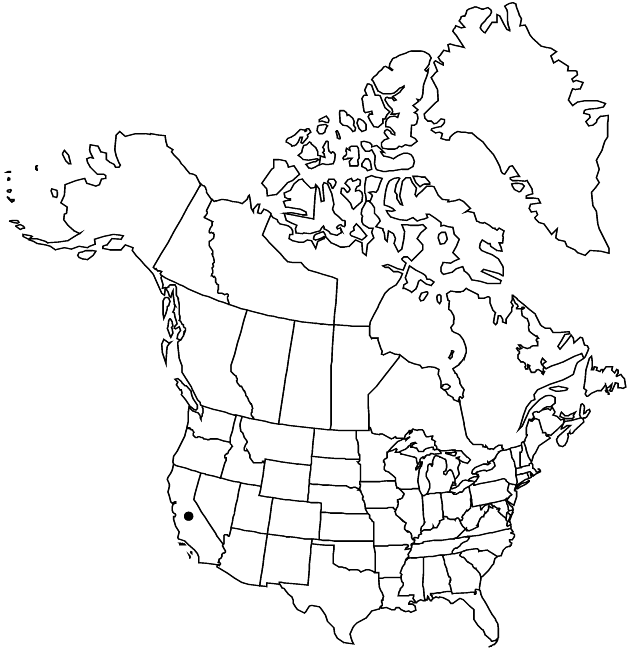Cirsium praeteriens
Contr. Gray Herb. 53: 19. 1918.
Biennials or perennials, probably more than 100 cm; rootstock unknown. Stems stout, erect, loosely arachnoid with fine trichomes and villous with jointed trichomes; branching unknown. Leaves: blades elliptic to oblanceolate, 15–30+ × 6–8+ cm, divided halfway or more to midveins, lobes linear-lanceolate, rigidly spreading, entire or trifid, acuminate, main spines stout, 5–15 mm, abaxial faces tomentose with fine, non-septate trichomes, villous along major veins with septate trichomes, adaxial glabrescent or sparsely tomentose, villous along veins; basal not observed; cauline well distributed, distally not much reduced, sessile, bases clasping, not decurrent. Heads 1–5, terminal and in distal axils in spiciform arrays. Peduncles 0–1 cm. Involucres hemispheric to broadly campanulate, 3–4 × 4–5+ cm, arachnoid. Phyllaries in 6–8 series, narrowly lanceolate to linear, outer subequal, rigidly spreading, spines 5–10 mm, inner ± imbricate, bodies appressed, glutinous ridge absent, apices spreading, margins spinulose or scabrid, apices of mid and inner flattened, spineless, scabrid. Corollas white, 30–33 mm, tubes 16 mm, throats 9–12 mm, lobes 5.5–9 mm; style tips 6 mm. Cypselae light brown, 6 mm, collars also light brown, ca. 0.75 mm; pappi 25–33 mm.
Phenology: Flowering summer (Jun–Jul).
Habitat: Habitat unknown
Elevation: 0–100 m
Distribution

Calif.
Discussion
Of conservation concern.
Cirsium praeteriens is known only from Santa Clara County, where J. W. Congdon collected it in Palo Alto in 1897 and 1901. It is presumed extinct.
Selected References
None.